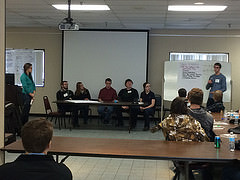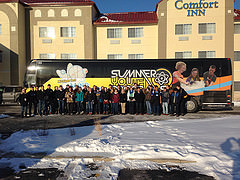In 1982 a young man named Jim headed off to college. He knew he was good in math and science, but had no idea what career that would lead to. Like his fellow freshmen, he found college courses far more challenging than high school. Lacking a defined use for the knowledge he was acquiring and the mounting challenge to acquire it, he was headed for trouble.
Jim’s grades suffered and he was put on academic probation by the university. Finally, at the end of his sophomore year, he received a letter from the Dean of Students that he had been kicked out of school. Jim was crushed as he shared the devastating news with his parents. He had a choice to make, speak with the Dean to be reinstated or choose a different path. Jim choose to reach out to the Dean for reinstatement and give it another try.
As Jim returned to school his grades improved marginally, for he still had not figured out a use for his knowledge, only that he needed to acquire it to graduate. He failed to take his knowledge for a test drive by participating in different co-ops or internships, allowing him to explore different career options. Jim ended up graduating with a “C” average, which limited his career choices after graduation.
Jim then began trying out careers beginning with the financial industries and leading to retail management, where he found his niche. He learned to lead others, execute creative merchandising, and manage expenses. He found an application for his knowledge and focus for the passion and work ethic he had developed. This combination of purpose and passion put him on the corporate ladder leading him to a position of training other managers to operate high volume retail operations producing sales of over $60 million annually.
Jim was experiencing professional and financial success, but still lacked personal gratification. In talking through his situation with his wife, he realized the most rewarding part of his job was helping others succeed. Jim, at 39 with the support of his family, decided to leave his job go back to school to be a middle/high school teacher.
Jim became a successful teacher in a small school. To improve his skills as an educator he completed his master’s degree, completing classes in the evenings and weekends. Soon he had an opportunity to work at a university, working with a team to create unique hands-on programs for K – 12 students that helped them discover their interests and talents.
Jim work at the university with freshmen began to bring back memories of his early challenges in college. He found students today suffered the same anxiety of how to apply their knowledge. This led him to return to school to pursue his doctorate in studying college freshmen and their experiences. Jim’s goal was to develop programs that would help freshmen understand how they were going to use the knowledge they were struggling so hard to acquire.
The moral of this story is that the true value of knowledge is decided upon by those that possess it. Successful educational institutions must focus not only on delivering knowledge to students, but ensuring each student explores ways to apply that information or skills that are valuable to each of them.

